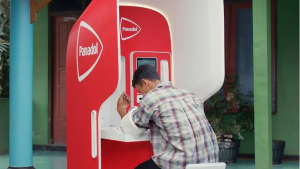First Published in

We live in a world of constant, cascading change. Powerful geopolitical, demographic, technological and economic forces are disrupting life as we know it. They are eroding our business, social and political institutions. Old behaviours and methods of generating growth no longer work as well as they once did. Traditional business and economic models based on making efficient choices among existing options are starting to crumble.
Designomics is important because both parts of the word – design and economics – are undergoing vast change as we speak. The global economy is emerging from the Great Recession, the worst recession since the Great Depression, with a very different shape, a very different trajectory and a very different set of growth engines. Design, with a capital “D” is also emerging from the recent crisis, with a different form and function. A Design-based business model and a Design-based economy provide the best new opportunities for creating economic value, growth, revenues, profits, jobs and wealth for the decades ahead.
Recently I read a paper on the fusion of nanotechnology and fashion. It was Fashion Week in New York at the time, so people were talking “fashion, fashion, fashion”. But in addition to beauty and cool, they were also talking about sustainability and technology in fashion. Design today is much more than style and aesthetics. It is about framing a path to the future and a process of getting there. Even in, especially in, fashion.
Increasingly, people are turning to Design and creativity as a new paradigm to understand the needs and desires of changing cultures, and creating entirely new options that never existed before. It is the ability to generate fresh concepts today that lead to new products, services and even social systems in healthcare, education and transportation tomorrow. In an era of cascading change that doesn’t pause or end, Design is providing a pathway to the future.
Here I will examine the major forces changing our lives today and show how Design provides a package of tools, methodologies and perspectives that can generate new economic value. First, I will discuss three of the five most powerful global forces at work transforming our lives: geopolitics or the relative rise of the BRIC countries (Brazil, Russia, India and China) and fall of the West; demographics or the rise of the Gen Y generation, which is the demographic group between 16 and 27 years old, and the decline of the Baby Boomers; and technology or the rise of social media and the spread of new digital cultures. I have not covered the other two global forces at work – urbanisation and global warming.
Secondly, I will examine the rise of “Design Thinking” and explain how it is the most appropriate means of generating economic growth today. I will explain how the tools and methodologies of Design have evolved so that Design has moved from creating artefacts to shaping human interactions, from focusing on materiality to shaping social systems. I will end with a suggestion that in the 21st-Century, the organic, generative, culture-based model of Design may well surpass the mechanical, engineering model of current business organisations.
Let’s begin with the forces behind the cascading change sweeping through global society. First, the relative – and I repeat relative – rise and fall of nations, and what it means for culture and commerce. In January 2010, the internet regulator called ICANN announced that it would allow web addresses to be written in non-Latin languages. In effect, it reflects the end of English dominance of the web. People in Africa and Asia will be able to address their email in their own languages. I predict this move will go down in history as being as important as the dollar going off the gold standard in 1973. In fact, they are two data points on an historic arc representing a trend – the rise of Asia vis-a-vis America and Europe.
So what does this mean for the future? When one or two nations have the economic and political strength to lead world society, the cultures of those nations tend to dominate much of world culture. Music, education, economic models, art and political systems. We know this. What we sometimes forget is that the homogeneity of world culture makes it easier for world commerce. You only have to worry about a handful of cultures that you do business in – your own, the dominant one and the others that copy the dominant one.
Today, with the rise of Brazil, Russia, India, China, South Africa and other emergent countries, if you do business, you have to know many, many cultures. We live in a growing diversity of cultures – a heterogeneity of independent societies – and you have to understand them all. We are moving from global cultural homogeneity to diversity. At the same time, we are moving from economic and political hegemony to a multi-polar world. This makes doing global business a lot harder. Old tools and methods won’t work. We need new ones.
The second big trend, the rise of the Gen Y or the Millennial Generation and fall of the Baby Boomer demographic is perhaps even more important. Each Millennial Generation in every country varies somewhat, but most share a distinctive culture that is very different from older generations. In the US, Gen Y has a unique and powerful culture. It is urban, collaborative, participatory, green and generative. Young people like to use tools and to make things. In the US, Gen Y is also pan-ethnic, trans-gender and trans-national. They think globally. Millennials in China share many of these traits – except they are very nationalistic and are pro-ethnic.
The Gen Y generation or Millennials in the US and Europe live in a culture of free information that is instantly available, with constant communication with friends that are global in scope. They live on digital platforms that are ever changing. They inhabit a participatory media that gives them the tools to create, share and re-appropriate content, including their own fluid identities. I believe Millennials live in what I call a “Learn-Share-Make” culture.
In the US, the Gen Y generation is already changing how businesses and society shop, brands, communicates, educates, delivers healthcare, transports itself and even raises families. I believe the rise of this new generation is so transformative that I am launching a new Gen Y Research Lab at Parsons School for Design to study global Gen Y culture. The Gen Y Research Lab will take a deep ethnographic approach to understanding Millennials, generate insightful research, provide a forum for Gen Y to gather for collaboration, and build a global network to present Gen Y creativity to the world. This network will be the foundation for an incubator that stages student creativity and connects it to the global marketplace. I want the Gen Y Research Lab to be the first step in building a New York-based D-School like Stanford’s, that focuses more on culture than technology, more on ethnography than engineering and more on urbanism than utopianism.
The third transforming force in our lives is digital social media. For the first time in history, it is now easy and inexpensive to create our own communities and cultures, anywhere, anytime. We can belong to cultures that we aren’t born into, cultures that we choose to enter and leave easily. Social media is creating tens of thousands of digital cultures every year – cultures you need to understand and engage with if you want to sell them products or services. You know there are 40 000 villages in India that you may want to do business in, but now there are also 40 000 digital villages every week on the web that you have to follow if you want these “villagers” as customers.
These three global forces – the rise and fall of nations, the rise and fall of generations, and the spread of digital social media – are combining to transform our world and especially our global economy. The first 50 years of the 21st-Century will look very different from the second 50 years of the 20th-Century. We are on the cusp of a “New Normal”. This New Normal situation in the world will need a new paradigm, and fresh tools and methods to generate economic growth and prosperity.
Which brings me to Design. During the time that big political, demographic and technological forces of change have been reshaping the global economy, the field of Design has been evolving into a serious discipline that can help us navigate today’s economic uncertainties and generate value for tomorrow’s products and services.
Design has made a revolutionary journey in the past decade from a narrow field able to focus on artefact and aesthetics, to a broader space that has the ability to engage and interact with social systems in culture. Design has expanded its tool kit and methodologies to be able to move beyond materiality and the making of stuff, to encompass the design of social systems and the transformation of healthcare, transportation, education and shopping. Today, corporations are asking designers to design brand strategies as well as the products and services that the brands themselves consist of.
Building on the user-centric roots of industrial design, Design has an ethnographic core that allows business people and others to connect with any and all cultures, real and digital, anywhere around the world. And Design’s ability to learn from these cultural connections and translate that data into new concepts for products and services, gives it the power to generate revenue and profits in a global economic environment of deepening uncertainty. If Six Sigma and management thinking were our guides to efficient choice-making and profit maximisation in yesterday’s era of global hegemony, stability and homogeneity, then Design is our guide to deep consumer understanding, generative option-making and strategic brand finding in an era of global heterogeneity, instability and diversity.
So what does this mean for designers, innovators, entrepreneurs, artists, creators and, perhaps especially, corporation managers? Technology used to dominate innovation. Today, technology is everywhere and accessible to all. Design is far more important to innovation than technology. There were many touch-screen cell phones available in the world when Apple came out with the iPhone. Motorola had a good one in China. But Apple designed the touch-screen platform to make it easy to use and opened the platform to developers who have created over 100 000 amazing applications that millions of consumers just love. Love. Emotion. Connection. Engagement. Interaction. That’s Design. Finding relevance and meaning to consumers living in a multiplicity of real and digital cultures is the new key to business success. Co-creation, designing with people, not just for them, will generate new economic value in the future.
Take the Kindle, the electronic book delivery device by Amazon. The Kindle is the first online technology platform embraced by the elderly in the US. Why? It was designed to do just one thing very easily – it delivers and presents books cheaply and easily online in a way that people in their 60s and 70s can use. There’s no interaction, no colour, no video. The Kindle provides print on an electronic page, exactly what the elderly, book-reading demographic wants. Designing for specific demographics and their own cultures is crucial when generations are so far apart in their use of technologies.
Of course, young Millennials hate the Kindle because it doesn’t deliver what their generation wants – interaction and sharing – on their social media platforms, such as the iPhone or Facebook. That’s why so many young people in my class at Parsons School for Design were disappointed with the new Apple iPad. They told me they couldn’t create their own content with it. The iPad didn’t have the most basic tools for remixing video and music. The students said they could only consume what the big media producers offered them. So I’m guessing that the iPad will become a bigger hit with my generation than Gen Y.
Within the marketplace, the Gen Y cultural preference translates into what I call the “iPhonisation of service”. Young people want service delivered over Facebook or iPhone or MySpace where they can instantly access it, share it, change it and use it. That means designing interactive games, tax-advice, healthcare, movies and educational curricula so that information and entertainment can be delivered on a social media platform. This is the big, new, expanding space of Design today.
Design means designing the entire customer experience, from discovering what people really need, to shaping interactive solutions for them and finally creating a hard product package such as a cellphone or car that is both aesthetically pleasing and useful to people.
This is where companies create economic value today. This is heart of Designomics, where Design drives Economics to generate growth and prosperity in the world.
I would like to end on a philosophical note. One reason why people are turning to Design today is that it is essentially optimistic. Design has a future-facing perspective and a tool-using core competence. The whole purpose of Design is to make the new. In a world of uncertainty and cascading change, Design can be our navigator. We should embrace it.












